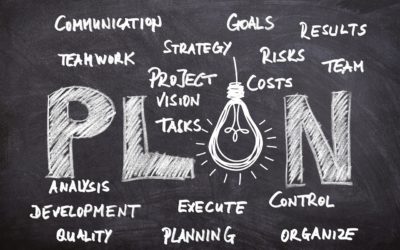Recent years have set off alarm bells that continue to echo through the corridors of businesses worldwide. From 2020’s COVID-19 pandemic, through to the Russian invasion of Ukraine in 2022, and the accompanying seismic shocks to the global economy and stock markets, we’ve seen an avalanche of unpredictable events. These occurrences, and the fact that “business as usual” might not return, have underscored the crucial need for a trait previously overlooked by many companies: resilience.
Resilience—the capacity to withstand unforeseen threats or change, and then rebound even stronger—is not just desirable anymore; it’s a critical survival skill for companies intending to thrive in the upcoming decade.
Demystifying Resilience: Beyond the Buzzword
In this piece, we’ll unpack the McKinsey & Company’s framework for resilience. It’s easy to say “develop resilience,” but the task gets trickier when it comes to defining what it means, and even more so when implementing it. In this article, we’ll clarify the components of resilience and introduce strategies businesses can adopt to become more resilient. Over time, we’ll explore this subject in more depth, providing focused action plans for different types of organizations to assess and bolster their resilience.
Embracing Instability: The Rise of Resilience
Reflecting on recent global events, it’s apparent we’ve been thrown into an era of instability and change. These tumultuous times have exposed the fragility of businesses and economies, posing significant stress tests. As we navigate these uncertain waters, the ability to adapt and respond to change—the essence of resilience—is what will set successful businesses apart from the rest.
The Six Pillars: Building Blocks of Resilience
We begin by delving into the essence of resilience. This isn’t a quality limited to your company’s financial health, although maintaining a sturdy balance sheet is certainly part of the equation. Resilience stretches across every facet of your enterprise, each dimension playing a critical role in determining your organisation’s ability to weather shocks and emerge stronger. According to McKinsey, these six dimensions are financials, operations, technology, organisation, reputation, and business model.
1. Financials: This isn’t about just having cash in the bank, but also how well you manage risks, debts, and liquidity.
2. Operations: Operational resilience refers to maintaining a robust production capacity, ensuring that your supply chains are secure and flexible.
3. Technology: Are your technological systems secure and flexible? Can they adapt to rapidly changing situations and still keep your business operational?
4. Organization: This pertains to the strength of your company’s culture, its leadership, and your team’s agility. How well does your team adapt to new scenarios? Is there a sense of unity and a shared vision?
5. Reputation: How well is your company perceived by your clients and the public? A solid reputation often implies trust, which can carry your company through tough times.
6. Business Model: This concerns how adaptable your business model is. Can it pivot to accommodate changing circumstances? Does it have the potential for diversification or evolution?
Steps towards Strength: Cultivating Resilience
Building resilience in these areas won’t happen overnight. But understanding and focusing on them is the first step toward creating a business that isn’t just about surviving the storms, but learning to dance in the rain.
Preparing for the Unpredictable While we can’t predict the future, developing a keen sense for anticipating potential scenarios will serve us well. It’s about foreseeing possible challenges and preparing for them—not with fear, but with the confidence that comes from knowing you’ve done your homework.
But let’s face it: no matter how prepared you are, surprises will pop up. That’s when your ability to respond rapidly and effectively makes all the difference. It’s about more than mere survival—it’s about leveraging adversity as a springboard for growth and transformation.
Out with the Old: Rethinking Risk and Resilience
We’ve all got some rethinking to do. Traditional risk-avoidance measures, like ticking off a list of potential threats and drafting business-continuity plans, are becoming increasingly outdated. It’s not enough to merely brace for impact—we need to reimagine how we approach risk and resilience in a rapidly evolving business landscape.
Embracing uncertainty might seem counterintuitive. But it’s often in the murkiest waters that we find the most beautiful pearls. Uncertainty, when approached with resilience, can be a catalyst for innovation and a trigger for profound change. The trick is not just to prepare for the unexpected but to welcome it as an opportunity for growth.
Building a Resilient Business: Your Roadmap Ahead
Resilience is about being ready to navigate the rocky road ahead with agility, tenacity, and a touch of audacity. It’s about building a business that’s not only robust but also flexible, adaptable, and, above all, prepared for whatever the future may bring.
In closing, let’s remember that uncertainty isn’t always a bad thing. In fact, it can be a powerful driver of innovation and change. So let’s embrace the uncertainty, build resilience into our businesses, and see where the wave takes us. After all, as entrepreneurs, we’re all about turning challenges into new opportunities.
Let’s buckle up and get started on this journey to resilience together.
Picture Credits: Image by Gerd Altmann from Pixabay
Picture explanation: Bonsai trees are often used as symbols of resilience and agility. They withstand harsh conditions, and their growth can be manipulated without harming the plant, symbolising adaptability.



